#BalsaWood
Explore tagged Tumblr posts
Text

✈ DIDO II
📸 1.997 · RC Model Nº 197
Plano realizado para RC Model a partir del croquis de B. Carratalá.
#aero#aeromodelismo#aeromodelling#aeromodelo#airplane#airplane_lovers#balsa#balsamodel#balsawood#glider#hobbie#hobbies#hobby#hobbyrc#madera#modelaircraft#modelismo#modelplane#pilotrc#radiocontrol#rc#rchobbies#rchobby#rcmodel#rcplanebuilders#rcplanes#throwback#design#bird
5 notes
·
View notes
Text
Types of Wood: Their Uses and Applications

Wood is one of the most versatile and widely used materials in the world, with applications ranging from construction to furniture making, art and crafts, and much more. The different wood available vary in appearance, texture, strength, durability, and other characteristics, which make them suitable for different purposes. Understanding the different wood types and their uses is essential for anyone who works with wood, whether professionally or as a hobby. In this article, we will explore some of the most popular types of wood, their unique properties, and the applications for which they are best suited. Read More: Types of Timber Used in House Construction
Types of Wood
The following are different types of wood available in the market, each catering to specific purposes. From hardwoods to softwoods, discover the perfect material to bring your projects to life with precision and beauty. 1. Hardwood Hardwood is a form of wood that originates from deciduous trees, which shed their leaves annually. This type of wood encompasses a wide range of species, each with distinct characteristics and applications. hardwood is known for its durability and aesthetic appeal, hardwood is often utilized in the construction of furniture, flooring, and various woodworking projects. Popular hardwood types are oak, maple, mahogany, and cherry, among others, each prized for its unique grain patterns and color variations. Hardwood are dense and robust nature makes it resistant to wear and tear, ensuring a longer lifespan compared to softer wood varieties. Its versatility varies to both indoor and outdoor applications, with outdoor furniture and decking benefiting from its resilience to weathering. 2. Softwood Softwood is a wood type derived from coniferous trees, which are characterized by their needle-like leaves and cones. This wood type encompasses a diverse range of tree species such as pine, spruce, fir, and cedar. Softwoods are known for their comparatively faster growth rates, making them a readily available and cost-effective option in various industries. While softer in comparison to hardwood, softwoods are valued for their versatility and suitability for a wide array of applications. Common uses include construction lumber, paper and pulp production, and the creation of wood-based products like plywood and particleboard. The light color and straight grain of many softwood species contribute to a natural aesthetic that is often sought after in both interior and exterior design. Additionally, softwoods are typically more receptive to treatments like staining and painting. Other, Detailed Types of wood are described below, 1. Akasa Wood
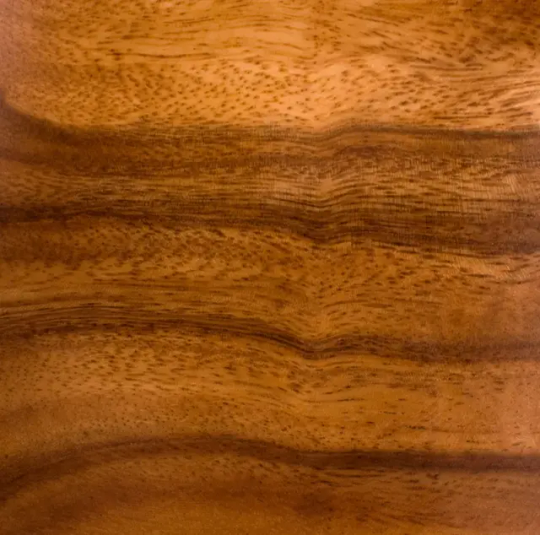
Akasa Wood Its types of heartwood and sapwood. Which is a straight-grained grey-brown color. It is mainly utilized in interior joinery, light structural work, flooring, utility furniture, veneer for plywood, and turnery. Akasa wood variety is general utility interior wood. Akasa Wood is a type of wood that is commonly used in traditional South Asian architecture and furniture design. It is known for its beautiful grain patterns, warm color tones, and durability, making it a popular choice for building homes, temples, and other structures in India and neighboring countries. The exact species of wood tree name that Akasa Wood comes from is not clear, but it is believed to belong to the Hardwood group of trees. 2. Ash Wood
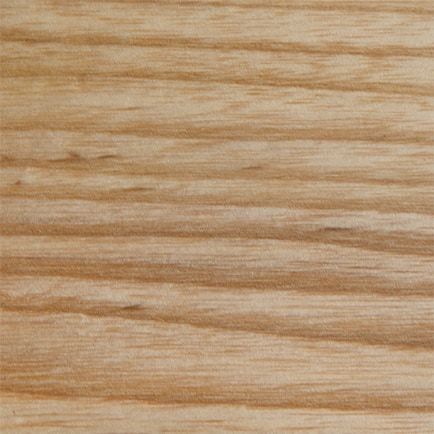
Ash Wood Ashwood is one type of light wood and it offers distinctive luster when polished. Its structure is almost open grain and is reasonably hard-wearing. Ash Wood is a hardwood species that is native to temperate regions of Europe, Asia, and North America. It is characterized by its light-colored wood varieties with a straight, pronounced grain pattern and medium to high density. Ash Wood is prized for its versatility, durability, and shock resistance, making it a popular choice for furniture, flooring, sports equipment (such as baseball bats), and cabinetry. The wood is also valued for its ability to hold paint and stains well, giving it a long-lasting, attractive finish. Ash wood fibers could be used as a component in MDF production, either alone or in combination with other wood fibers. 3. Balsa Wood
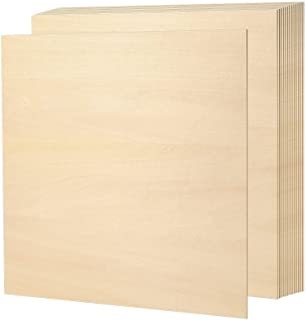
Balsa Wood However, balsa wood is one of the softest and lightest weight timbers, it is a hardwood. Balsa is mainly used for heat, sound, and vibration insulation and for model making. Balsa Wood is a type of fast-growing hardwood that is native to Central and South America. It is known for being the lightest commercial wood in the world, with a low density and exceptional buoyancy. Due to its low weight, Balsa Wood is often used in a variety of applications, including modeling, kite building, surfboards, and packaging materials. It is also used as a core material in the construction of composite materials, where its lightness and strength make it ideal for use in lightweight structures. Despite its low weight, Balsa Wood is surprisingly strong and has a good strength-to-weight ratio, making it a versatile and popular material in many industries. 4. Bamboo Wood
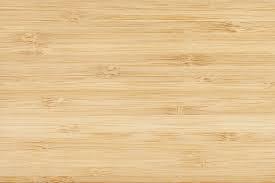
Bamboo Wood It generally has a rich golden color that's very hard-wearing. As bamboo is impervious to moisture, it can be used in conjunction with the ornamental part of a water feature or for flooring in bathrooms, conservatories, and other wet areas. Bamboo Wood refers to the solid and durable culms (stems) of various species of bamboo plants, which are used as a building and construction material. Bamboo is a highly renewable resource, as it grows much faster than traditional list of hardwoods and can be harvested in as little as 3-5 years. Bamboo is often considered to be a green alternative to wood, as it is eco-friendly and has a lower carbon footprint compared to traditional hardwoods. Bamboo Wood is used in a variety of applications, including flooring, furniture, cabinetry, and even structural applications, due to its strength and durability. It is also used in the production of handicrafts and other decorative wood materials list items, as its unique grain patterns and light color tones make it a popular choice for aesthetics. 5. Beech Wood
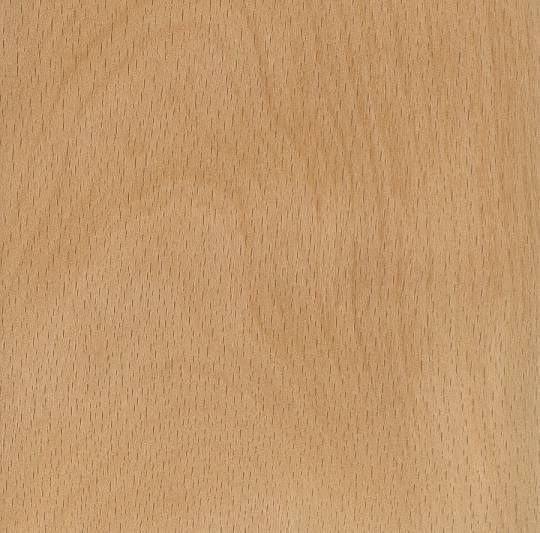
Beech Wood Beechwood is one of the hard durable wood that is found in its natural form and comes in a variety of warm, soft honey tones. Sometimes, beech has been treated at high temperatures to create a unique red color. Beech Wood is a type of hardwood that is native to Europe and Asia. It is characterized by its reddish-brown color and distinctive straight, fine grain pattern. Beech Wood is a dense and hard wood, with a high resistance to wear and abrasion, making it a popular choice for furniture, flooring, and cabinetry. The wood is also known for its ability to hold fine details, making it ideal for use in moldings, carvings, and other decorative applications. In addition, Beech Wood is valued for its steam-bending properties, which make it a popular choice for the production of chairs, bentwood items, and other curved furniture pieces. Overall, Beech Wood is a versatile and durable hardwood that is widely used in a variety of applications. Read More: How To Remove Mold From Wood | How To Clean Mold Off Wood 6. Brazilian Mahogany Wood
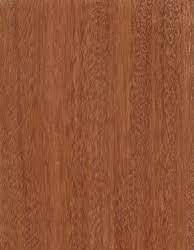
Brazilian Mahogany Wood Brazilian Mahogany is a type of hardwood that is native to South America and commonly known as "genuine" or "true" mahogany. It is prized for its rich reddish-brown color, fine texture, and straight grain pattern, making it a popular choice for high-end furniture, cabinetry, flooring, and millwork. Brazilian Mahogany is known for its stability, durability, and resistance to decay, making it ideal for use in outdoor and marine applications. The wood is also favored for its workability, as it can be easily shaped, sanded, and finished to a high standard. However, due to the species' declining populations, Brazilian Mahogany has become increasingly difficult to source and is now protected by international trade laws, which limit its harvest and export. As a result, alternative species of wood that are similar in appearance and properties are often marketed as "Brazilian Mahogany." 7. Cedar Wood
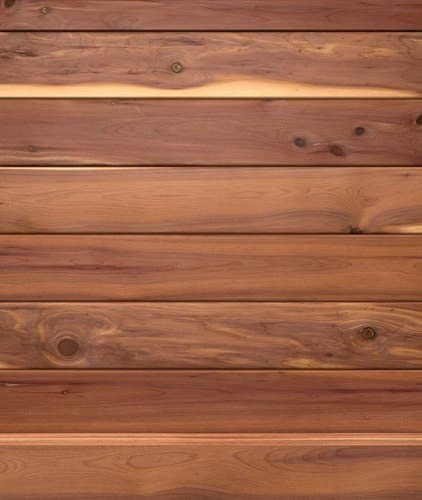
Cedar Wood It is one of the major used lightweight softwood. It can be useful in construction work. Cedarwood is proven durable with straight gain. Cedar Wood refers to the softwood from various species of trees in the cedar family, which are native to the Americas and some parts of the Old World. Cedar Wood is known for its distinctive reddish-brown color and fragrant aroma, as well as its natural resistance to rot, decay, and insect damage. This makes it a popular choice for outdoor use, such as in decking, fencing, and siding, as well as for indoor use, such as in closets and chests, where it helps to protect clothing and other stored items from insects. Cedar Wood is also prized for its attractive appearance, with a fine, uniform texture and straight grain pattern, making it a popular choice for decorative uses, such as paneling and trim work. Due to its resistance to decay and insect damage, Cedar Wood is considered to be a sustainable and environmentally-friendly choice for many applications. 8. Celtis Wood Celtis wood is a straight-grained but sometimes interlocked wood. It comes up with yellowish-grey heartwood and sapwood and a fine texture with a slightly lustrous look.

Celtis Wood Celtis is a genus of deciduous trees and shrubs in the hemp family (Cannabaceae), commonly known as hackberries. These trees are found in a variety of habitats throughout the world, including temperate and tropical regions of the Americas, Europe, Asia, and Africa. Celtis Wood is known for its durability and workability, making it a popular choice for furniture, cabinetry, flooring, and other applications. The wood is typically light to medium in color, with a straight, fine grain pattern and a uniform texture. Due to its relatively low density and moderate weight, Celtis Wood is also used as a substitute for other, more expensive hardwoods in some applications. However, the wood is not widely available and is not as well known as other hardwoods, such as oak or maple, making it a less common choice for many uses. 9. Conifer Wood

Conifer Wood Wood cut out from Coniferous or cone-bearing trees is known as conifers. Generally, these trees are evergreen, the trees have needle-like leaves, and produce softwood timber. This term generally covers and includes: Read More: Difference Between Wood and Timber | What Is Wood | What Is Timber | What Is Lumber 10. Cherry Wood
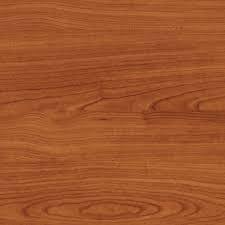
Cherry Wood Cherry wood has the color reddish-brown and it comes up with straight-grained wood that may contain pith flecks and small gum pockets that create random patterning. Many people believe that cherry wood is the best wood for carving because it is soft enough to be carved easily but is also hard enough to hold its shape. Cherry wood also has a beautiful, rich color that makes it a popular choice for furniture, carvings, and other decorative items. 11. Dahoma Wood

Dahoma Wood Dahoma wood generally has coarse interlocked grain, yellowish-brown streaky heartwood, and pale sapwood. It is one of hard timber mostly for exterior use, such as exterior structural timbers, mining timbers, marine work, sleepers, outdoor furniture, decking, and so on. 12. Danta Wood
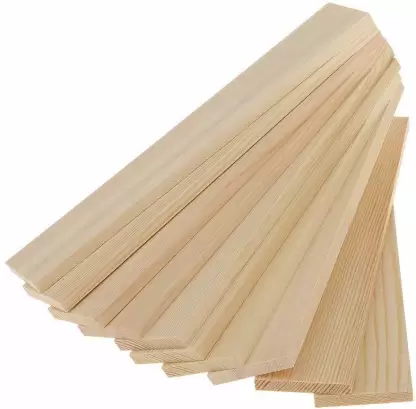
The danta wood comes up with fine grain mostly interlocked with mahogany red heartwood and lighter sapwood. It's a hard and strong wearing surface. It is mostly used for high-quality joinery, cabinetwork, benchtops, boat components, decking, and interior and exterior applications. 13. Douglas Fir Wood

Douglas Fir Wood Douglas fir wood is grown in North America and the UK. It generally has a light reddish-brown color with softwood, used for construction, interior, and exterior joinery, and plywood. It is very strong compared to weight. 14. European Beech
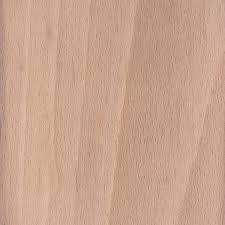
European Beech European Beech is generally grown in Europe and is a white to pale brown color hardwood, used for furniture, interior joinery, and flooring. It can be used for plywood. 15. Elm Wood

Elm Wood It is one of hardwood and grain similar to or even exceeding that of oak. It is found in a variety of colors and tones from cream to dark brown and its grain is equally diverse, ranging from straight to wavy. Characteristically, the elm comes up and incorporates knots and burrs. 16. Greenheart Wood

Greenheart Wood Guyana and Suriname. It is a dense, strong and durable wood that is known for its excellent resistance to rot, decay and termites, making it a popular choice for outdoor use such as marine construction, piers, and bridges. The wood is characterized by its distinctive green color that darkens to a deep brown over time when exposed to sunlight and air. Greenheart is a heavy wood, weighing between 700-800 kilograms per cubic meter and has a high resistance to shock and bending. Greenheart is also a valuable timber due to its unique properties, including its strength and durability, which make it a preferred wood for use in a variety of applications, such as flooring, decks, docks, and heavy-duty construction. Additionally, Greenheart is often sought after for its ornamental value, particularly in furniture making and cabinetry. 17. Iroko Wood
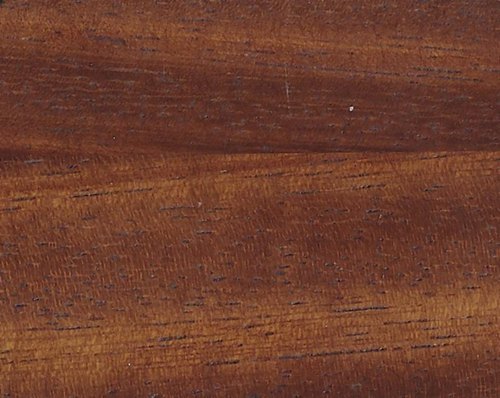
Iroko Wood Iroko wood trees mostly grew in West Africa. It has the color yellow-brown hardwood with a grain that's irregular and interlocked. Iroko wood is mostly utilized for interior and exterior joinery and for construction work. A cheaper alternative to teak. 18. Khaya Wood

Khaya Wood Khaya is a type of hardwood that is commonly known as African Mahogany and is native to the tropical rainforests of West and Central Africa. It is a prized wood species due to its beauty, strength, and stability, making it a popular choice for a wide range of applications. The wood is known for its distinctive reddish-brown color, which can range from a light pinkish-brown to a dark red-brown, and has a fine, uniform texture with a straight grain pattern. Khaya is a relatively lightweight wood, with a density of around 550 kilograms per cubic meter, and is known for its good workability, making it easy to saw, plane, and sand. Khaya is widely used in the furniture and cabinetry industries, where it is prized for its attractive appearance and durability. The wood is also commonly used for interior trim, doors, flooring, and veneers, as well as for the construction of musical instruments such as guitar and drums. Additionally, Khaya is a popular wood for outdoor use due to its resistance to rot and decay, making it a good choice for decks, pergolas, and outdoor furniture. 19. Ligneous Wood
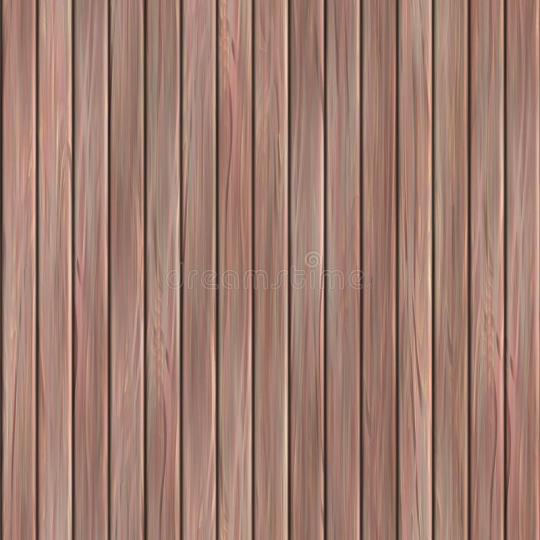
Ligneous Wood The ligneous wood materials are bagasse, bamboo, cereal straw, and flax or hemp shives. "Ligneous" is an adjective used to describe wood-like or woody properties, but it is not a specific type of wood. The term is used to describe materials that have properties similar to wood, such as hardness, strength, and rigidity. 20. Maple Wood

Maple Wood It is generally straight-grained and is characterized by irregular patterning, which can include fiddle back and bird's eye patterns. It comes up with light brown heartwood color and thin white sapwood that can be tinged with reddish-brown. Maple wood is very strong, heavy, and has a high resistance to knocks. After being stained, it has a light, almost translucent appearance. maple is found in Canada and is one of the hardest species. Read More: How to Remove Stain from Wood (Best 9 DIY Tips & Tricks) 21. Meranti Wood

Meranti Wood This is a mixed-species grouping of the Shorea genus that's grown in South East Asia. Read the full article
#advantagesofwood#AkasaWood#alltypesofwood#AshWood#BalsaWood#BambooWood#BeechWood#bestwoodforfurnitureinindia#BrazilianmahoganyWood#CedarWood#CeltisWood#CherryWood#ConiferWood#DahomaWood#DantaWood#dentifyingwoodtypespictures#differenttypesofplywood#differenttypesofwood#differenttypesofwoodforfurniture#DouglasfirWood#ElmWood#European#EuropeanbeechWood#EuropeanWood#GreenheartWood#importanceofwood#IrokoWood#KhayaWood#kindsofwood#LigneousWood
0 notes
Text
HAVING AN INTENTIONAL ROOM
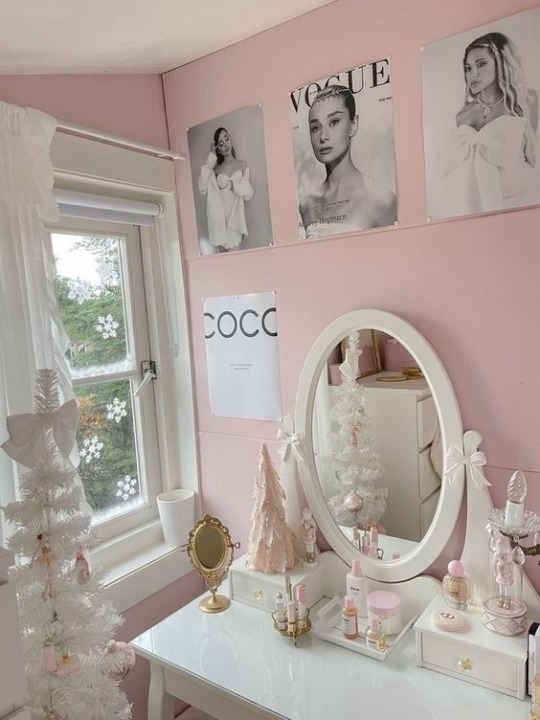
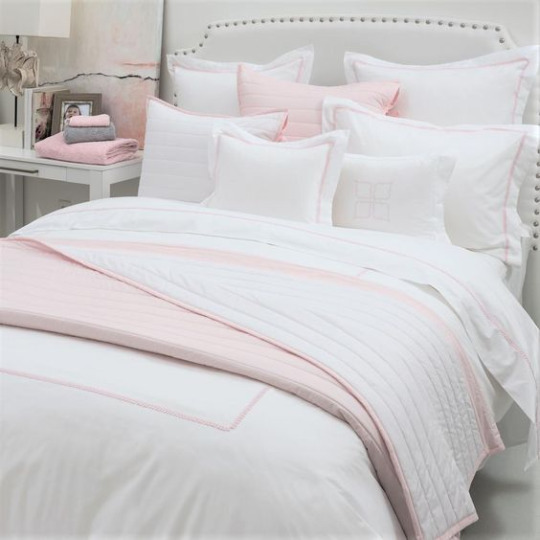
Your room is the most important place in your life. You sleep, wake up, heal and experience many emotions just in your room. You have to take care of your room, so it is spiritually the ideal place to grow into the best version of yourself.
KEEPING YOUR ROOM CLEAN
Keeping your room free of mess is an act of mindfulness and self-discipline that supports your overall journey and connects you with your higher self. It helps with promoting clarity, and cultivating inner balance and is an everyday self-care ritual.
Make your bed every day. You have to respect the place in which you sleep and heal.
Hang up clean clothes after the day or put any dirty clothes in your laundry hamper, avoid tossing them on the floor.
Find a place for everything, and know where everything is. If you do not know where each thing in your room is located, you either have too much clutter or you’re disorganised.
Tidy up your room daily, neatly putting everything away in its place. If needed, buy a few organisers.
Don’t leave rubbish for extended periods. Treat your room like a temple, don’t disrespect it, and pick up after yourself.
Try to avoid eating meals in your bedroom. We forget the dirty dishes over time, and it stinks and attracts unwanted bugs.
Change bed sheets regularly. Once a week at the most, for more hygienic reasons though.
Remove unwanted items on your bedside table. Keep it minimal and intentional with anything you want to place on it.
Regularly clean up the dust in your room, using a duster or a damp microfiber cloth on all of the surfaces.
ENCOURAGING GROWTH IN YOUR LIFE
A room designed to encourage inner growth serves as a physical reminder of your commitment to self-improvement, personal development, and overall well-being. It creates an environment helpful to improvement, self-reflection, and positive change.
Keep specific areas of your room designated to one task in your life. For me, my desk is for productivity, my bed is for resting or relaxing and my bedroom floor is for mindful activities.
Throw away any items that do not serve a purpose to you anymore. Avoid keeping items that bring you painful or harmful memories.
Minimise the presence of technology in your room. I suggest having zones in your room which is device-free or having a time of day in which devices are not allowed in your room.
Create a vision board poster in your room that you can see every day, which helps to visualise and motivate you to create your dream life.
Place meaningful quotes, affirmations, mantras or prayers as reminders of the values, mindsets or intentions you wish to cultivate in your life.
Display personal achievements. If you won any awards or certificates, place them in a way in which you can view them every day. If you have done something in your life that you think is an achievement but have no award to display, just simply create your own. Buy some balsawood and glue it together to create your own medal.
Place items that align with the habits or routines you want to cultivate in your life so that they are easily accessible. Put a workout mat in the corner, always have your journal on your desk or have a cold water bottle ready to go when you wake up.
3. DECORATING YOUR ROOM TO REFLECT YOU
Decorating your room in a way that reflects your true self brings a sense of authenticity and comfort. It creates a nurturing environment that allows for self-expression, reflection, and personal growth which ultimately contributes to your journey of inner development.
Make a mood board or vision board of how you would want your room to look, how it supports you and how it makes you feel. Choose a colour scheme in this process as well.
Add candles or incense that you think embodies who you are, or who you want to be. For example, if I want to be a cleaner person, I would choose a candle that smells like fresh linen.
Put up posters of things that you like, people who you look up to or anything that expresses who you are.
Add a canopy to your bed while you sleep. So cute, and I believe it helps protect you from any unwanted energy entering through you while you sleep.
Add a rug, even if you already have carpet, to enhance the cozy ambience of the room.
An ottoman at the end of the bed can elevate your room to look more expensive, if needed, it can also be an organiser for your extra things.
Put life in your room, adding low-maintenance plants or flowers can liven it up. A little extra, research some plants or flowers meaning’s and pick one that resonates with you.
Display any of your favourite jewellery, bags, clothing pieces, or make-up around your room. A nice way to appreciate what you have, without actually using them.
#becoming that girl#clean girl#green juice girl#becoming her#that girl#that girl lifestyle#glow up#glow up era#pink pilates girl#dream girl#dream girl life#pink pilates princess#it girl#it girl energy#it girl tips#dream girl tips#feminine energy#feminine journey#that girl energy#that girl routine#wonyoungism#hyperfemininity#hypergamyblr#self improvement#self development#self help#self care#self growth#self love#inner strength
4K notes
·
View notes
Text





Michael's has these cheap little balsawood coffins for $3 so I painted one and rigged it with a watch battery and some cheap LED nodes
321 notes
·
View notes
Note
If you feel inspired, #10 “I’ve seen the way you look at me when you think I don’t notice.” from the random prompt list <3
Her dad's guitar takes up a fair amount of space in Katniss's lap, boxy but lightweight, with room to hide behind when her nerves get the better of her. Slightly battered and smooth from use, the balsawood is cool to the touch when she picks its strings and makes it sing. But she's getting antsy, so she puts her guitar in its case and wanders over to the corner of the stage. She's careful to stay hidden behind the heavy velvet curtain. Ms. Trinkett will give her the devil if she catches her peeking out.
People are trickling into the high school auditorium: classmates, a few teachers, and a smattering of parents. She sees Gale and the rest of her cousins file into a row near the stage with Hazelle. Prim and her parents have been here for a while. Katniss hopes the auditorium won't be too full when Principal Flickerman starts the show. She's not a confident performer. Singing and playing are more of a compulsion for her, a hunger she has to feed rather than a bid for attention.
When the clock ticks down to zero (performance time! Ms. Trinkett brightly states), she's waiting for her turn to go on stage with the guitar strapped to her chest.
Madge starts the show with a classical piece. The school's piano is out of tune, but her best friend makes it work. Katniss can't keep the smile off her face. Madge is the shyest person she knows, and she's proud of her friend for getting over that fear to play tonight.
"Wow. Did you know she could play like that?" Peeta Mellark asks. Somehow he'd wandered away from the group he was standing with and up to her side.
Katniss gives a sharp nod, surprised he said anything at all. Not that he doesn't talk. He's popular, friendly, and always hanging out with one group or another. He just never talks to her.
"I mean, of course you do," he laughs at himself. "Is that why you're such good friends? Shared talent?"
She shrugs. "Maybe." She's never considered that before, but he might be on to something.
"Nothing like twenty questions before we go onstage. I'm just a little nervous. Talk too much when that happens."
"No, it's okay," she says. A strain of nervousness makes her insides tight, too. She decides she likes talking to Peeta. He says what he's thinking, but in a more thought-out way than she can pull off. Words stumble across her lips, leaving her embarrassed more often than not. "You can talk. It's not too much."
Peeta grins at her.
"Um, what are you doing?" she asks. "Not like, life in general. For the show."
"Comedy. Going to try getting laughs out of my dumb jokes."
"Oh. I didn't know you did that."
"Me neither, until two weeks ago when they posted the sign-up sheet. I had to find a way to get into the show."
"I was dragged here kicking and screaming. That's brave of you to try something new."
"Or stupid. We'll see." Peeta says. "I know you have a beautiful singing voice, but I didn't know you played."
"My dad taught me. This is his, actually." She pats the fretboard, keeping her eyes on the strings, feeling shy at the compliment. "I didn't know you'd heard me sing."
"I think it was your first public appearance. Kindergarten. Mrs. Paylor asked if anyone knew The Valley Song. Your hand shot up, and when you stood on your chair and sang, my fragile 5-year-old heart was lost," he says.
"That didn't happen," she says.
"Swear to god. You had on a red checkered dress, and your hair was in two long braids. I like your hair tonight, too. It's really pretty."
"Thank you," she murmurs. Katniss pats the braided, pinned updo her mother did for her. She likes the old-fashioned style because it feels in keeping with her mountain heritage.
Vague memories of that red and white dress invade her mind. She does her hair in a single braid most days because it's long and gets everywhere if she doesn't, and she did wear it in two as a child.
"You have an incredible memory."
Peeta shrugs, smiling down at the tips of his shoes.
"Peeta, you're next dear," Ms. Tinkett says, bringing Katniss back to herself. Madge's song was over three students ago in the rotation, and she hadn't even noticed.
"Wish me luck?" Peeta asks her quietly.
"Good luck," she says, kind of dumbfounded by their conversation. She'd caught Peeta looking her way when he thought she didn't notice but never considered what that meant.
She couldn't hear most of Peeta's stand-up routine, but she caught amused laughter from the audience. When it was her turn to go onstage and stand in the spotlight, their conversation was still in the forefront of her mind, and she found her fingers moving over the strings, playing The Valley Song and remembering the little curly blond headed boy from kindergarten.
#endlessnightlock writes#everlark#everlark fanfiction#everlark drabble#katniss everdeen/peeta mellark
74 notes
·
View notes
Text
Superman and the Notzis
For whatever reason, before any actual Nazis were featured in the comics- they had what were obviously Nazis, but were commonly called "Fifth Columnists" from "Country X". Superman, naturally, treated them as all fascists should be treated- boooooot to the noggin. These comics, most notably feature what I like to call Royalty-Free Hitlers, of which there are three.
Royalty Free Hitler #1, Reibel, the Fifth Columnist.
Seen in Superman #8 (1941), he is not actually a Hitler analogue in-story- just a sympathizer who's trying to convert Americans to his cause. Superman makes him brown his pants by taking his gun, shooting at his chest and then dabbing away.



Royalty-Free Hitler #2 - Karl Wolff, Dukalian Consul
As seen in Superman #10 (1941), this chucklefuck gets humiliated by Superman, who demonstrates that they aren't the apex of this planet- that guy happens to wear spandex and has a large wiener.

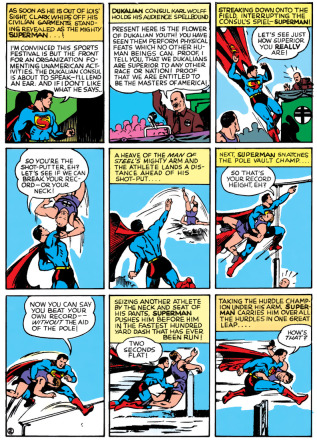

Royalty-Free Hitler #3, Razkal, Supreme Dictator of Oxnalia.
As seen in Superman #15 (1942), this dipweed milhouse balsawood of a man was attempting to bomb his neighbors into hell, but instead got his knuckles broken, his entire military dismantled by hand, and tossed into jail to be dealt with by the UN.




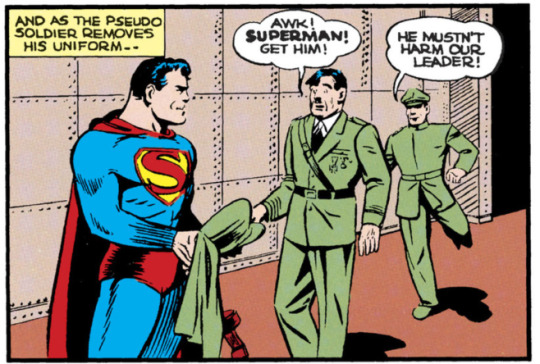
After this, ACTUAL HITLER showed up- notably after Pearl Harbor, in an off-handed panel in Superman #20 (1943), where he is portrayed as a gibbering man-baby.




Also, canonically, as seen in Superman #22, he contracts with a bunch of weird af green... alien-demons called Squiffles who head-butt him in the balls until he agreed to let them sabotage the american war industry in exchange for a..."favor"


Said favor turned out to be joining the legions of demons already possessing his soul. What the fuck.

20 notes
·
View notes
Text
New commission: YOJIMBO!
New commission: Summon Yojimbo!! This was an unusual style of commission for me to take on, but I really wanted to make it! I have been trying to focus on taking on commissions that I WANT to make. I absolutely love the colors and the design of this. The accessories and armor parts are all foam, very lightweight, and the sword is balsawood so it’s con-safe. It was really hard to get proper photos of this because none of my mannequins are the appropriate size, and the client is very tall. I took pics of it pinned onto a mannequin as well as being worn by someone, but it will fit the customers measurements much better!
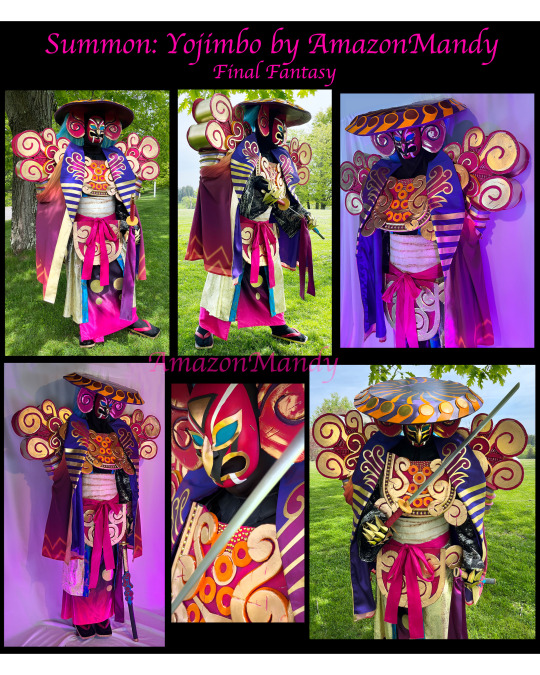
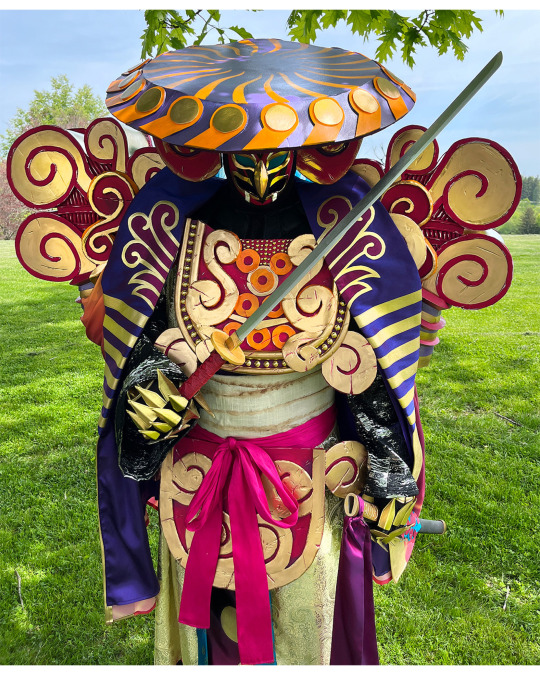
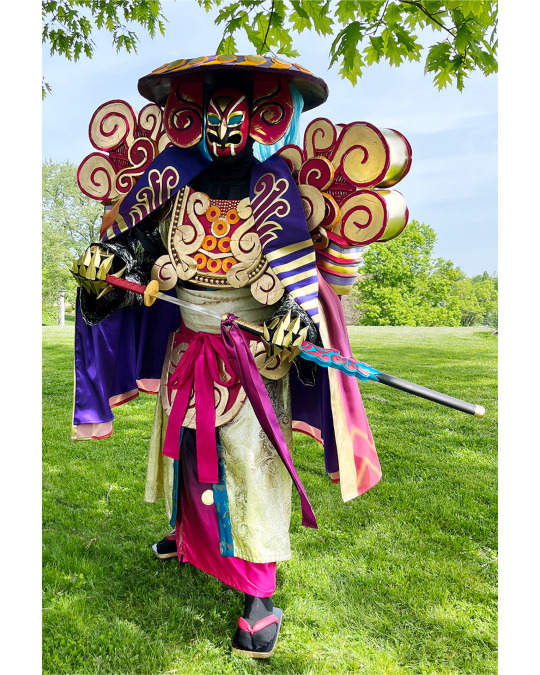

#cosplay#cosplaycommission#amazonmandy#sewing#seamstress#cosplaycommissioner#commission#cosplay commission#Yojimbo#samurai#summon#finalfantasyx#final fantasy x#ffx#final fantasy cosplay#foamcraft#foamarmor#foamsmith
57 notes
·
View notes
Text

Nerds unite.... 22" wingspan.
Hand built by my own hands...with balsawood... litespan covering.. all up weight 96grams.
4 notes
·
View notes
Text
the gnome house (process)
I had the idea to make a little room in a tree stump, and decided a Pringles tube would be the right size to make a good base. this also gave me an excuse to buy and eat Pringles
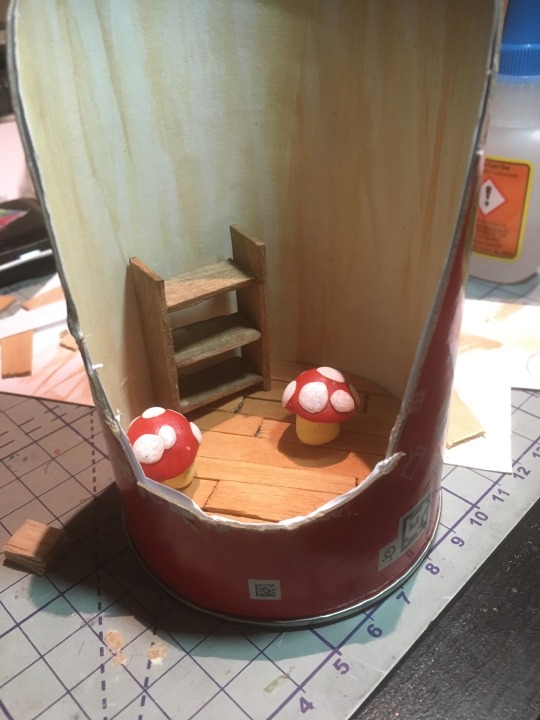
I traced the base of the can on paper, decided what furniture I wanted and worked out a scale
the inside wall is a piece of card painted with a vague wood effect
the floor is lollipop sticks trimmed and painted, stuck to a piece of card and cut to size and glued in place
the shelf is based on scaled measurements of a shelf in my home, I did a mock-up with paper then made it from basswood or balsawood glued together. the table is wood and matchsticks, with a scrap of fabric
used the technique from making RoLife Sam’s Study for the books - little squares of wood with covers of paper which I decorated. The book on the table is a strip of paper concertina’d, again with a cover of paper. I liked making the little books, if they were going to be more visible I could print out proper book covers in future projects. the picture frames and clock are various paper/card/wood, and the flowers are paper and wire in a polymer clay cup
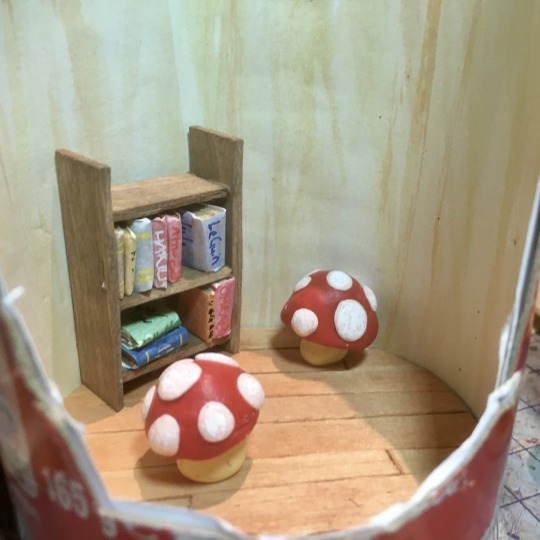
the rug is felt, I think it’s a bit too textured, so I would maybe try something different another time
the toadstools, gnomes and bugs are polymer clay. I think the ladybird and snail came out pretty cute

for the tree roots and bark I made papier mache using PVA glue, decoupage medium, paint, water and loo roll. turned out better than I expected
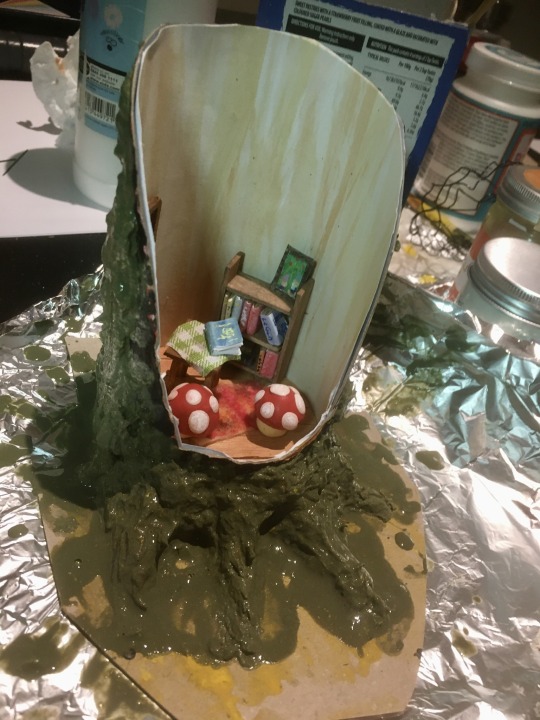
the moss is torn up bits of sponge, again mixed with paint and glue. I was meaning to buy fake foliage/flocking but didn’t get round to it, but I like how this looks

Overall I’m happy with how the house turned out. I wanted to try an electric light and I could have added more little details, but decided to limit how much time I spent on it
The main thing I’m not pleased with is mostly just lack of planning on the gnomes. I only eyeballed in the armature length, and then did that thing like with pasta where it looks the right amount but you forget how much it expands. I only had a fairly thick armature wire, and as they’re a kind of chubby chibi-ish build they ended up a lot bigger than the wire. I then also didn’t make an effort with where the joints would be on the armature, so their little legs don’t sit very well and the arms may not be the same length. but yeah they’re just way too big. In future I’d find a similar sized figure to reference and/or make a paper cut-out to follow

10 notes
·
View notes
Text


Little balsawood gnome I painted for Palestine last month 🫶🍉
12 notes
·
View notes
Text
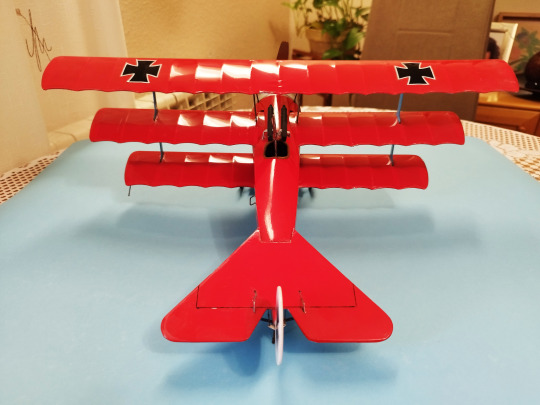
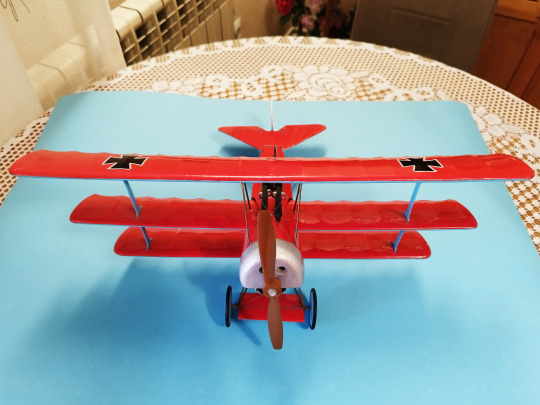
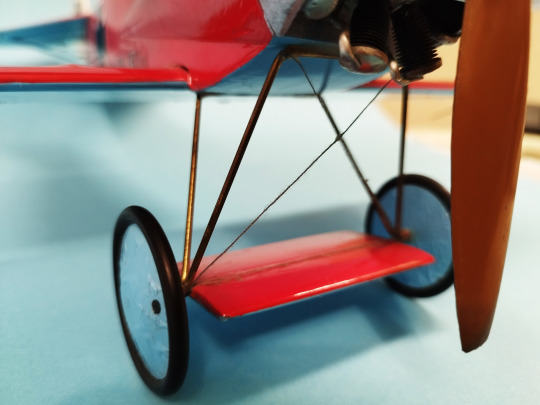

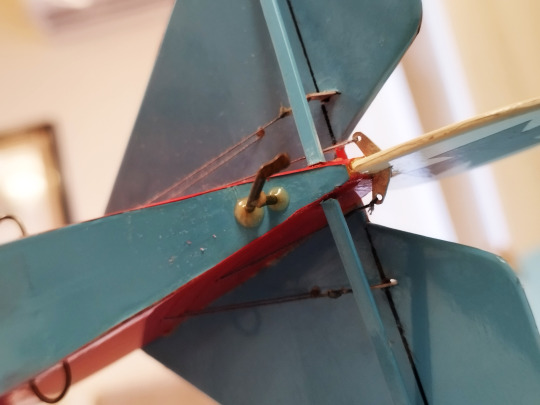

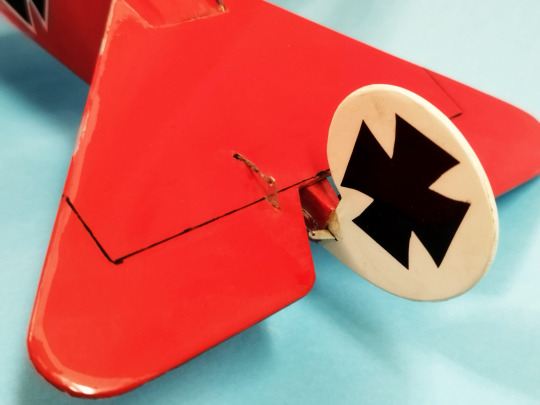

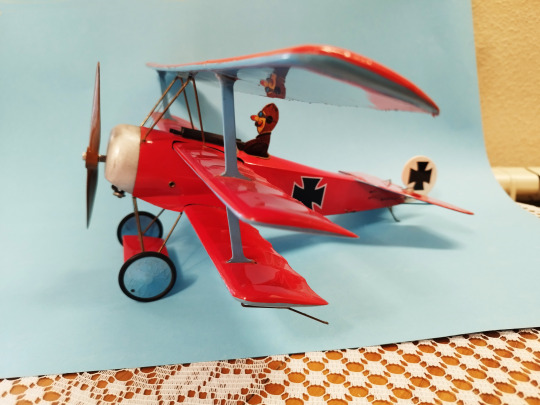

✈ Fokker Dr.I
📄 Kit de semi-maqueta estática del mítico caza usado por el Barón Rojo, perteneciente a una serie de clásicos que lanzó Modelhob.
#fokker#fokkerdr1#baronrojo#aero#aeromodelling#aeromodelismo#airplanes#balsa#balsamodel#balsawood#hobby#modelaircraft#retro#scalemodel#modelhobby#modelhob#handmade#modeloaescala#modeloaescalaavion#aeromodelistas#aeromodelista#redbaron
2 notes
·
View notes
Photo

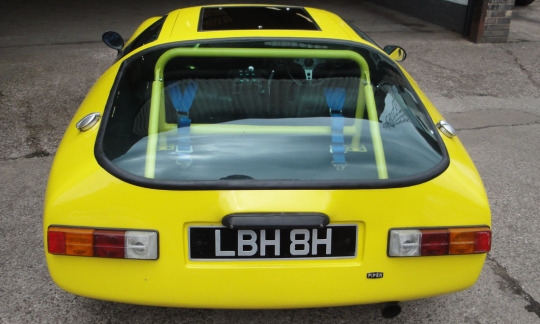
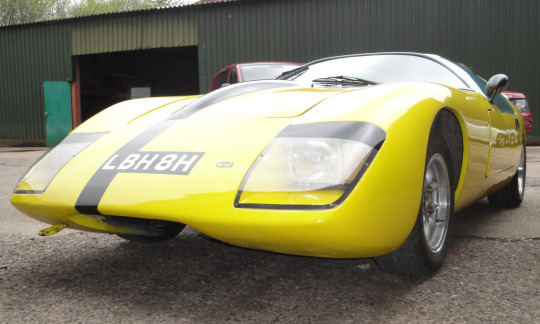
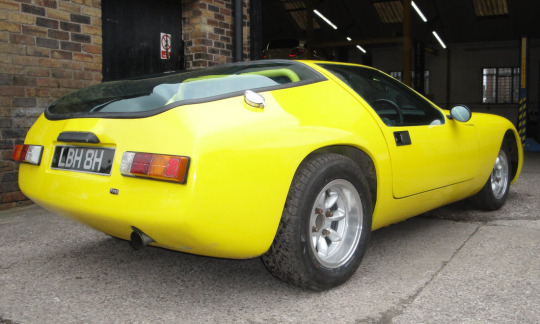

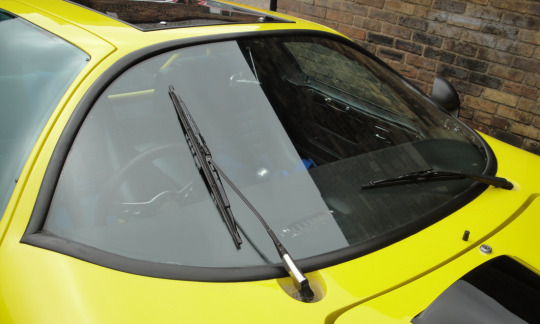


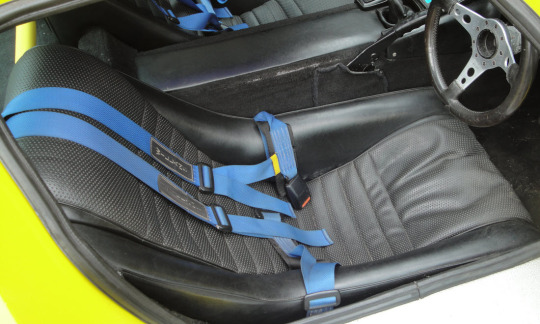

Piper GTT
Before the dominance of the big conglomerate car manufacturers took hold in the late 1960s, there was room in the market for niche companies whose products fulfilled the demands of a few drivers who wanted something a little different to the everyday, somewhat bland mainstream offering. Some companies such as Lotus thrived and are still with us while the likes of TVR have come and gone (several times), hopefully to return. Others had their day in the sun but ultimately disappeared after a relatively brief but bright life; Piper sits firmly in the later camp. Though the end results were fairly diverse, these companies’ approaches had remarkable commonality with cheap to produce fiberglass bodies (no need for expensive tooling which required high production volumes to amortise its costs) sitting on bespoke chassis while their running gear, which was financially impossible for a small business to develop and manufacture, was sourced from the industry’s major players.
Piper were kept pretty busy trying to build cars so production records are sketchy to say the least and it is thought that just eighty road cars and some twenty racers were built making them rare beasts today, though their survival rate is undoubtedly higher than that of propriety sports car such as say MGBs. Formed in 1966 by ex-racer George Henrotte, owner of Campbell’s Garage (hence the Scottish Piper logo and company name) in Hayes, Kent with the able assistance of engineer Bob Gayler (ex Harry Weslake), machinist Ken Packham and artist come designer Tony Hilder who had been responsible for the McLaren M1A, their first ‘whole car’ effort started as an evenings and weekends project until a customer, Gerry Hall, showed an interest in buying one. With his role as Works Gemini Formula Junior team manager winding up, Henrotte gave the green light for a limited production run of the pretty sports racers with four being completed for customers to add their powertrain of choice to; Hall put an Alfa Twin Cam in his, Bobby Bell a Lotus Twin Cam while racer Jerry Titus opted for a Buick V8. With a Mallite (balsawood/alloy sandwich) monocoque F3 car another Piper product, the company was building a reputation as a hotbed of outside the box thinking and a road-usable GT car was the next project. Approached by some Austin Healey Sprite racers who were looking for a light and sleek home for their running gear, a mock-up of what was to become the Piper GTT was shown at the 1967 Racing Car Show, apparently yielding an impressive seven hundred enquiries.
With Henrotte being kept busy with the tuning side of the Piper business, there was a timely intervention by Clubman racer Brian Sherwood who had not only bought a Piper GT but as the Sprite guys gradually fell by the wayside, was instrumental in more suitable Ford components being introduced at the expense of the BMC kit. With Sherwood now very much hands on, the Company was split with car production moving to his Wokingham premises while Henrotte concentrated on the aftermarket components business, though the companies remained closely linked both financially and practically. Through the late 1960s production increased from a drip to a trickle until Bill Atkinson, an enthusiastic GTT owner who had joined the company in the summer of 1969 as Works Manager, and Tony Waller (Sherwood Holdings’ Company Secretary) made great strides getting the GTT into some sort of series production. Instrumental in saving Piper’s car business, Sherwood was at heart a racer and he took them on an ultimately ill-fated foray to Le Mans in 1969 with the ultra-low, mid-engined GTR, an ambitious project that is thought to have cost £250,000. His untimely death late that year coupled with strikes at Ford ultimately resulted in the company being wound up in June 1971, despite the strong progress being made by Atkinson and Waller on the car production and development front (the longer wheelbase P2 was eventually launched in early 1971). However, this was not quite the end of the road for Piper; reborn as Emmbrook Engineering under the same management team, the Piper P2 remained in production until 1974.
41 notes
·
View notes
Text
Capitalism does not breed innovation. It breeds greed. It breeds waste. It breeds making balsawood houses on tracts to be rotten and abandoned when no one can afford what will only last a few decades with constant mainance. It breeds ddnial of right to repair, of planned obselescence, of dumping lithium and cobalt into landmines while children risk their lives and limbs to mine for it overseas. It breeds stripping of workers rights and protection. It breeds the gif economy where no one is employed but everyone is overworked.
Capitalism breeds rot.
11 notes
·
View notes
Text
“What?” Joseph asked as the shambling horde scattered. Well, all except for one.
“Okay fellers, we need two ladders, a 5X8 piece of balsawood, half a dozen nails, three slinkies, and a rope. That bastard isn’t getting out of it this time!” What could only be described as a zombie in a construction outfit began barking orders, and then it hits you… all of these zombies are wearing various uniforms.
Some (like the leader here) are in construction outfits. The group looking for nails are wearing smocks, so maybe artisans? The pair carrying the slinkies are wearing Walmart branded vests. There’s at least one K-pop idol group getting the ladders.
And then it hits you, this isn’t an apocalypse…
It’s a Union.
The zombies were hot on your tail when your “friend” had shut the door to leave you for dead. As you dreaded your gruesome fate… The horde just looked at you? One of them even somehow said “That’s the 3rd time this week! Screw it… vengeance time?”
2K notes
·
View notes
Text
Sustainable Modelmaking



The sustainability and the ethics is really important to us because it can effects how much material we use and how we do use it. Like with plywood it can be harvested the wood so there will be plenty of wood. But not all wood can be harvested like that so you won’t have loads of the same wood. And some wood is very difficult to find because not all woods grow in the same country.
Balsa isn’t a typically an option in the certain modelling because it’s has very low density and strength and limited structural use and non standard material and inconsistent materials properties. So if I did anything with balsa wood it would break straight away. So it was better to use a different type of wood.
The spruce and balsa types of wood. The balsa is extremely light and soft and spruce is light and much denser and stronger than balsa.
Balsa isn’t very strong and dents and it very crush able to easily. Spruce is strong and stiff for its weight it’s often used for in structural applications.
Balsa is a model airplane and crafts and insulation and lightweight core in composite materials but the Spruce musical instruments aircraft frames and construction.
These wood are all two different types of things.
0 notes
Text
Connotaciones subjetivas
Por José Luis López Muñoz
Me he pasado buena parte del verano sumergido en la traducción de la primera novela de un autor angloindio. Son varias las lenguas europeas cuya literatura se ha ramificado al echar raíces en otros continentes. Es notorio el caso del inglés, el español, el francés y el portugués. Estas cuatro lenguas han dado origen en América a literaturas que igualan o superan a la metropolitana. Sin duda la menos conocida en España es la literatura canadiense de lengua francesa, aunque es cierto que viene floreciendo desde hace por lo menos cincuenta años.
El caso del inglés presenta una mayor variedad, en parte por la amplitud y diversidad de su imperio y quizá también porque ha durado hasta mediados del siglo xx (¡qué raro se me hace decir el siglo pasado!). Y también porque en el caso de Asia la distancia cultural con Europa es todavía mayor.
Confieso que me fascina desde siempre la literatura india escrita en inglés; tal vez influya en parte el que hace ya bastantes años traduje dos novelas de autores ingleses que muchos de los escritores angloindios consideran seminales. Me refiero, claro está, a Kim, de Rudyard Kipling, y a Pasaje a la India, de E. M. Forster. Creo que antes de que Salman Rushdie nos deslumbrase a todos con Los hijos de la medianoche, ya leía yo con fruición las novelas de R. K. Narayan, autor indio nacido en 1906 y fallecido hace poco más de un año. Aunque no estoy en condiciones de asegurarlo, creo que ninguna de sus obras se ha publicado en castellano. Tal vez porque su nombre completo está por encima de nuestras posibilidades: Rasipuram Krishnaswami Ayyar Naranayanaswami. Narayan, a semejanza de Faulkner, García Márquez o Juan Benet, es el creador de una región imaginaria, llamada Malgudi. Dos de sus novelas, especialmente, son mis preferidas: Painter of Signs (pintor de rótulos) y Vendor of Sweets (vendedor de dulces).
Otro autor indio, de origen farsi, aunque nacionalizado canadiense, y de muy escasa producción, pero con una novela maravillosa, que sí ha sido traducida al castellano, es Rohinton Mistry. La novela se llama en castellano Un perfecto equilibrio. La misma editorial ha publicado después otra novela anterior, titulada Un viaje tan largo. Las dos han sido traducidas por Aurora Echevarría. Y hace tan solo pocos días me ha llegado la noticia de que se ha publicado su tercera novela, Family Matters (asuntos de familia), que estoy totalmente seguro de que merecerá la pena.
Pero todo esto venía a cuento porque al traducir a Hari Kunzru, mi autor de este verano, me he tropezado con uno de esos casos, que siempre se citan, de la carga personal que los autores pueden poner a veces en las palabras y que no está reflejada en ningún diccionario, porque se trata de una vivencia personal.
En la segunda parte del libro se nos cuenta (entre otras cosas) el progresivo distanciamiento entre un misionero escocés y su mujer. El primero ignora la cultura india, que considera irrelevante, mientras su esposa va poco a poco identificándose con el país en el que vive. En la descripción de ese proceso me encontré con el siguiente pensamiento de Elspeth, la misionera: «How could he set up his foolscap and balsawood purity against the infinite mysteries of the universe?», cuya traducción literal nos daría más o menos lo siguiente: «¿Cómo podía [su marido] contraponer una pureza de folio y de madera de balsa a los infinitos misterios del universo?» Salta a la vista que «pureza de folio y de madera de balsa» no resulta inteligible. Y, sin embargo, las dos palabras foolscap y balsawood están correctamente traducidas. La primera sirve para designar un tamaño de hoja de papel y la segunda designa la madera de un árbol de América Meridional. El Oxford añade que es una madera que se utiliza sobre todo por su poco peso o extrema ligereza.
Afortunadamente, el correo electrónico está resultando ser una verdadera bendición a la hora de hacer consultas a los autores. Escribí al mío para que me explicara lo que quería decir y me respondió lo siguiente: «se trata de que la inocencia [prefiero traducir purity así para quitarle connotaciones sexuales] del misionero es infantil, o como un modelo en miniatura, una reproducción, una construcción. Folio es un tipo de papel asociado con aulas anticuadas (yo tenía un maestro muy mayor que siempre nos decía que “sacáramos un folio para escribir”) y a mí me resultaba una palabra muy exótica. En cuanto a la madera de balsa la tengo asociada con modelos de aviones. Elspeth piensa que su marido es como un niño por su sistema de ideas absurdamente rígido».
Como se ve, había mucho de personal en la elección de las palabras. Decidí prescindir por completo de las imágenes del autor y buscar otras equivalentes. Me decidí por «inocencia de parvulario y soldaditos de plomo». No sé si habré acertado.
1 note
·
View note